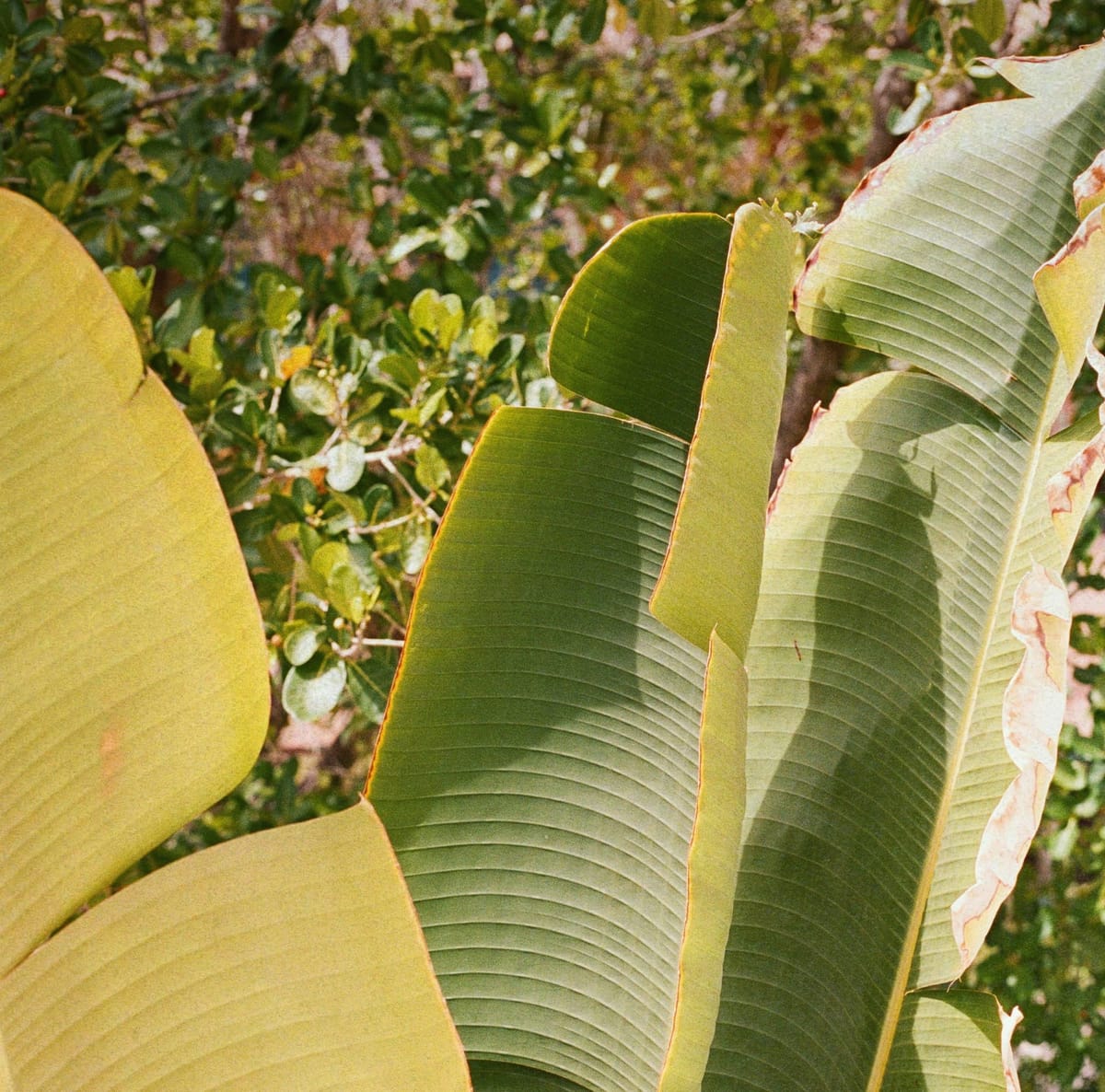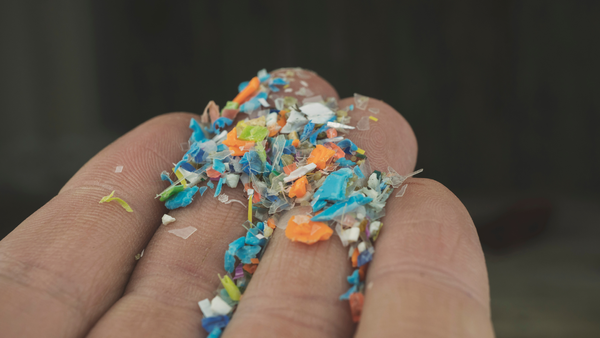The Non-Tree Fibre Shift
Could new non-tree fibre innovations pave the way to a regenerative materials economy?

In my last post of 2024, The Paperisation of Everything, we explored how pulp and fibre are redefining sustainable packaging. While they've emerged as the quiet achievers in the innovative materials space, scaling them so they can be viable alternatives to plastics has its challenges.
Feedstock availability and sustainability are both high hurdles that need to be cleared if these materials are to scale, all while showing proven reduced environmental impact through rigorous Life Cycle Analysis (LCA).
Recycled and waste materials are ideal, but they won't be enough, so cultivated sources must be high-yield and low-impact. Traditional wood pulp, though renewable, cannot scale sustainably without risking deforestation or taking up valuable arable land for food production.
Fortunately, innovators are exploring agricultural residues, fast-growing grasses, and other non-tree fibres, which not only reduce reliance on virgin wood but also repurpose waste and underused land.
With these advances, 2025 could be the year of what materials sustainability expert Paul Foulkes Arellano recently coined the 'Non-Tree Fibre Shift'.
The bleeding edge of paper and pulp innovation
The European paper and paperboard industry offers a glimpse of what’s possible in the not-too-distant future.
A survey by the nova-Institute, commissioned by the European Federation of the Paper Industry (Cepi), highlights the untapped potential of non-tree fibres in accelerating paper and pulp's sustainability.
Materials like agricultural residues, textile waste, and fast-growing crops such as grasses, hemp, flax, and kenaf are already proving their worth.
These fibres are used in diverse applications, including tissues, food packaging paperboards, and specialty papers. Their unique properties, like higher fibre availability and mechanical advantages, enable innovations like advanced biomaterials and barrier coatings that rival their tree-based counterparts.
Addressing feedstock challenges
Scaling non-tree fibres isn’t without obstacles. Land use policies, seasonal availability, and energy-intensive processing remain significant challenges. For example:
- Seasonality: Many agricultural residues are available only after harvest, requiring year-round storage.
- Energy Use: Due to intensive energy and chemical inputs, non-tree fibres like wheat straw and flax can have a higher environmental impact than wood pulp.
- Industrial Adaptation: Existing paper machines optimised for tree fibre often struggle with slower drainage rates of non-tree pulp.
But with fast-growing feedstocks that regenerate quickly and thrive on marginal lands, recent advances in biorefining technologies, and a greater focus on circular economy principles, these hurdles can be mitigated.
Innovations in market and on the horizon
This is far from a one-horse race. A range of materials are showing early potential with the cost, performance, scale and sustainability chops to be considered viable alternatives.
Bast fibres (e.g., hemp, kenaf, jute) exhibit longer fibre lengths and offer superior mechanical properties compared to hardwoods, making them ideal for advanced biomaterial development.
Meanwhile, crop leftovers like wheat straw, sugarcane bagasse, banana stems, and corn stalks provide abundant raw material. And when used in combination with recycled fibres, they can create high-quality packaging.
Some examples:
GrasiKraft: Sustainable packaging made from grass fibres

Ranpak has introduced GrasiKraft, blending grass fibres with recycled paper to create a sustainable void-fill solution. The material requires less water during production and diversifies renewable fibre sources, enhancing the circularity of secondary packaging.
Designed for e-commerce and industrial applications, GrasiKraft combines the performance of traditional kraft paper with the eco-friendly advantages of grass-based materials, making it fully curbside recyclable and biodegradable.
Banana Stem Fibre
Papyrus Australia recently established an Egyptian facility producing 100% banana fibre moulded clam-shell packaging.
The facility, operating under a joint venture with Papyrus Egypt, now produces 6,300 clam-shells per hour through the company’s zero-waste process, which converts banana tree waste into a range of eco-friendly products, including moulded fibre packaging, veneer, and musa liquid fertiliser.
Meanwhile, Saathi Pads, a health care startup that produces biodegradable sanitary pads also made of banana fibres, is taking advantage of an abundance of discarded banana stems in rural India to make sanitary pads accessible and affordable for Indian women:
Regenerative > Sustainable
Non-tree fibres offer us an opportunity to leap beyond sustainability and into regenerative design.
Sustainability focuses on reducing our impact on the environment, while Regeneration is about increasing our positive impact on the environment.
Regeneration is a new way of thinking about how we interact with nature and ensuring that the systems and processes we design have a positive impact on the ecosystems and communities they are nested within.
As I've mentioned before, Bill Reed (one of the originators of Regenerative Design) once said:
"We're never doing something that is zero damage. So if that's the case, we are still degenerating the planet, and sustainability is just a slower way to die."
As non-tree fibres gain prominence, their potential to reduce at least some of our consumption-obsessed culture's environmental impact is clear.
Compared to virgin wood pulp, non-tree feedstocks offer several advantages:
- Carbon Sequestration: Crops like bamboo and hemp sequester carbon at higher rates than trees, contributing to climate change mitigation.
- Circular Economy Integration: Many non-tree fibres can be sourced from agricultural by-products, promoting waste valorisation.
- Biodiversity Protection: By reducing dependency on forest resources, non-tree fibres help preserve critical ecosystems.
End-of-life
Companies embracing non-tree fibres must also navigate infrastructure challenges, ensuring these materials are effectively processed and recycled at end-of-life.
Alternative fibres, like sugarcane bagasse, have been quietly integrated into recycling systems for decades, recently making up about 8% of recycled fibre inputs.
Recycling contamination isn't caused by these fibres themselves but by poor product design and end-of-life challenges. Contaminants like plastic linings on fibre-based packaging disrupt recyclability, turning these sustainable materials into monstrous hybrids.
This underscores the need for clearer policy settings, better labelling, and simpler designs that are compatible with single-stream recycling systems.
Will 2025 be the year of non-tree fibres?
The success of non-tree fibres in 2025 will hinge on supportive policies and market readiness.
Regions like Europe, where regulations prioritise renewable materials and recyclability, have become fertile ground for innovation.
The transition to non-tree fibres is no longer a question of “if” but “how.” As the world grapples with how to meet ambitious sustainability goals, 2025 could be the year that non-tree fibres begin to emerge as a viable mainstream feedstock.
By focusing on diverse, renewable, and scalable alternatives, stakeholders can build a packaging future that is not only innovative but regenerative.
The 'Non-Tree Fibre Shift' is more than replacing tree-based feedstocks—by focusing on diverse, renewable, and scalable alternatives, stakeholders can build a materials economy that is not only circular, but maybe even regenerative too.





